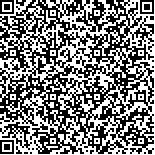| 引用本文: | 李宝新,张鑫,吕娟,郭淑芹,张玛丽,李杰,王翯,张云良.高分子化学材料负载短效胰岛素对糖尿病大鼠的降血糖作用[J].中国现代应用药学,2020,37(2):134-137. |
| LI Baoxin,ZHANG Xin,LYU Juan,GUO Shuqin,ZHANG Mali,LI Jie,WANG He,ZHANG Yunliang.Hypoglycemic Effects of Polymer Chemical Materials Loaded Short-acting Insulin in Diabetic Rats[J].Chin J Mod Appl Pharm(中国现代应用药学),2020,37(2):134-137. |
|
| |
|
|
| 本文已被:浏览 1882次 下载 808次 |

码上扫一扫! |
|
|
| 高分子化学材料负载短效胰岛素对糖尿病大鼠的降血糖作用 |
|
李宝新1, 张鑫1, 吕娟2, 郭淑芹1, 张玛丽1, 李杰1, 王翯1, 张云良1
|
|
1.保定市第一中心医院内分泌科, 河北 保定 071000;2.南开大学高分子化学研究所, 天津 300071
|
|
| 摘要: |
| 目的 研究高分子化学材料制备水凝胶负载短效胰岛素对糖尿病大鼠的降糖作用。方法 大鼠以65 mg·kg-1剂量腹腔注射链脲佐菌素制备糖尿病大鼠模型,随机分为模型组、常规组(常规胰岛素注射)、水凝胶组(水凝胶负载短效胰岛素注射),另设正常对照组,每组10只。监测各组大鼠药物干预后24 h内血糖的变化;高糖灌胃后血糖的变化;观察药物干预后肝肾功能水平变化。结果 24 h内模型组大鼠血糖无明显变化,常规组与水凝胶组的血糖均于3 h时显著下降至最低点后上升,但水凝胶组的血糖上升至12 h后再次下降,并于24 h内维持在原水平的49.3%~55.6%,显著低于同时间常规组的血糖(P<0.05)。高糖灌胃后常规组大鼠血糖于0.5 h下降,于1.5~2.5 h维持于原水平的59.8%~66.4%,显著低于同时间段模型组血糖(P<0.05),水凝胶组血糖值自0.5 h持续显著下降(P<0.05),2.5~3.5 h时血糖值均较同时间常规组血糖值明显降低(P<0.05),实验过程中无明显低血糖。同时,水凝胶组大鼠的谷丙转氨酶及谷草转氨酶显著低于模型组,其中谷草转氨酶明显低于常规组,但高于正常对照组(P<0.05)。结论 高分子化学材料水凝胶负载短效胰岛素后使其不仅降糖效果优于常规胰岛素,并且作用时间明显延长,可进一步应用于胰岛素新剂型的开发。 |
| 关键词: 高分子化学材料 胰岛素 糖尿病 降糖 |
| DOI:10.13748/j.cnki.issn1007-7693.2020.02.002 |
| 分类号:R965.2 |
| 基金项目:国家自然科学基金项目(81500644) |
|
| Hypoglycemic Effects of Polymer Chemical Materials Loaded Short-acting Insulin in Diabetic Rats |
|
LI Baoxin1, ZHANG Xin1, LYU Juan2, GUO Shuqin1, ZHANG Mali1, LI Jie1, WANG He1, ZHANG Yunliang1
|
|
1.Department of Endocrinology, Baoding No.1 Central Hospital, Baoding 071000, China;2.Institute of Polymer Chemistry, Nankai University, Tianjin 300071, China
|
| Abstract: |
| OBJECTIVE To investigate the hypoglycemic effect of polymer chemical materials loaded short-acting insulin in diabetic rats. METHODS The diabetic rat model was prepared by intraperitoneal injection of streptozotocin at 65 mg·kg-1 dose, and divided randomly into model group, regular group (insulin injection), hydrogel group(loaded short-acting insulin injection), and normal control group, 10 in each group. The diversification of blood glucose of rats in each group after intervention in 24 h, the variety of blood glucose after gavage administration of high glucose, and the transformation level of liver function and renal function were observed after intervention. RESULTS &NBSP;Within 24 h, there was no difference of blood glucose in model group; the blood glucose in regular group amd hydrogel group dropped to the lowest level at 3 h, but the ascendant blood glucose declined at 12 h hydrogel group. The blood glucose in hydrogel group kept the level of 49.3%-55.6% of initial content, which was remarkably deeper than that in regular group(P<0.05). After gavage administration of high glucose, the blood glucose in regular group descended at 0.5 h, and maintained the level of 59.8%-66.4% of initial content from 1.5-2.5 h, which was noticeably lower than that in model group(P<0.05). The blood glucose in hydrogel group came down from 0.5 h, which declined significantly from 2.5-3.5 h, compared with that in regular group(P<0.05). The most important was that there was no occurrence of hypoglycemia. At the same time, the ALT and AST in hydrogel group descend distinctly, compared with that in model group, and AST in hydrogel group was lower than that in regular group, but higher than normal control group(P<0.05). CONCLUSION The hypoglycemic effect of polymer chemical material loaded short-acting insulin is superior to that of regular fast-acting insulin with a prong long duration which can be further applied to the development of new insulin dosage forms. |
| Key words: polymer chemical materials insulin diabetes mellitus hypoglycemic effect |
|
|
|
|
